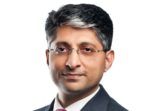“In developed markets like the US and Europe, commodity investors are more educated on longer term inflation protection, diversification and managing risks,” she said in a briefing yesterday.
“Here in Hong Kong, in Korea or in Taiwan, investors will ask, `What’s the most volatile commodity and how many times can we leverage that?’ It’s a completely different frame of mind.”
Commodities typically account for 5-10% of an average portfolio in the US and the level is similar in Asia, she said.
But for portfolios using a risk parity strategy, which focuses on risk level, exposure to commodities can be higher, sometimes up to 18%.
Correlation with equities
Two commodity ETFs focused on crude oil futures recently debuted in Hong Kong. They were issued by Samsung Asset Management (HK) and CSOP Asset Management and track the performance of futures contracts of West Texas Intermediate (WTI) crude oil. The Samsung product has higher volatility as rolling occurs every month.
There are also crude oil ETFs listed in Korea, Taiwan and Japan. Assets under management of the Taiwan one, Yuanta S&P GSCI Crude Oil ER Futures ETF, reached $268m as of April. It tracks the same index as Samsung’s.
Gunzberg noted that in general, institutional investors tend to favour oil more than gold, and retail investors the opposite.
While gold is traditionally considered a safe haven, oil may offer similar downside protection when Hong Kong’s benchmark Hang Seng Index is falling, she said. Since 1987, she said the HSI fell 5.6% on average in a given month, while crude oil dropped 0.2% and gold was down 0.1%, she noted.
Historically, commodities have had a low correlation with equities. For the period between January 2004 to December 2014, average correlation between crude oil (which represents 70% of all commodities) and the S&P 500 stood at about 0.4, while that with gold reached about 0.3.
“The correlation between commodities and stocks spiked to about 0.7 in February and now it is down to 0.3, which is more in line with the historical levels. The diversification argument is back,” she said.
















